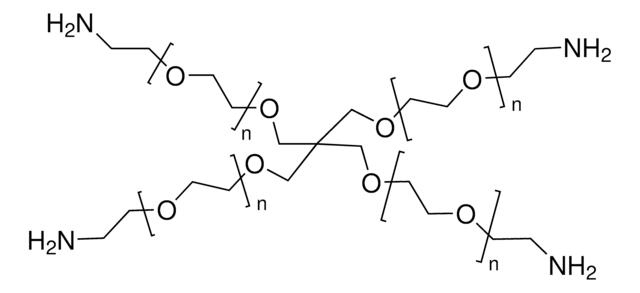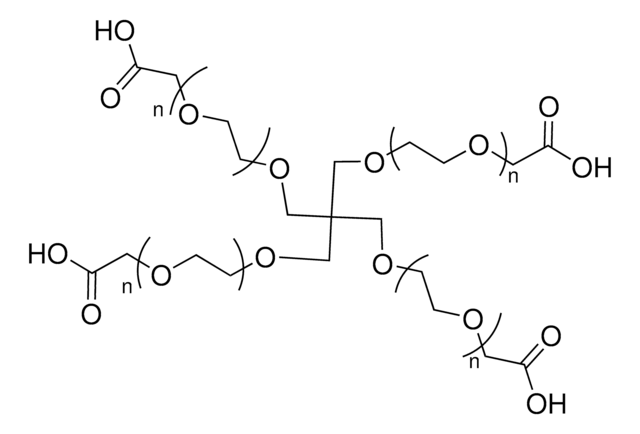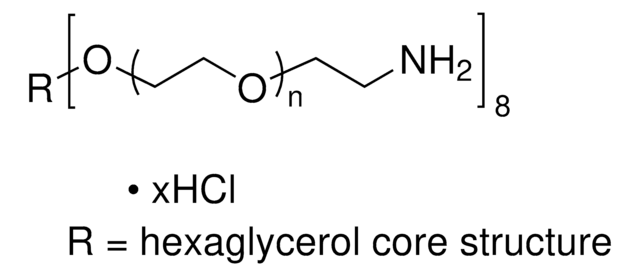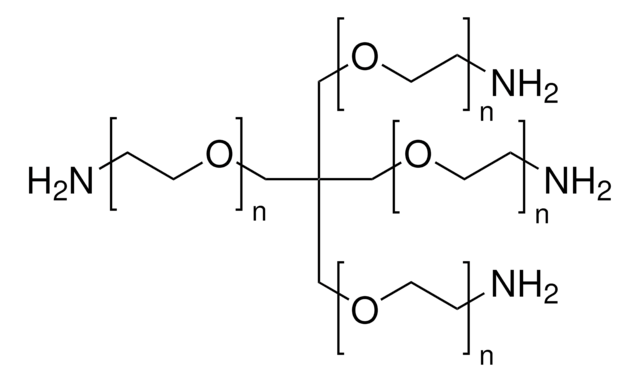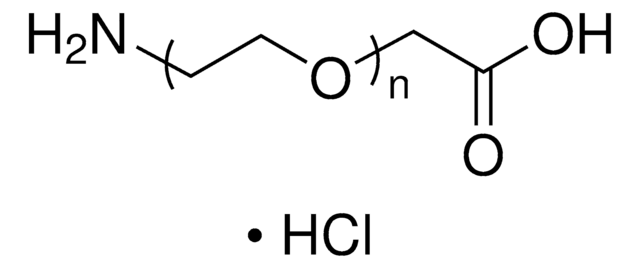JKA7026
4arm-PEG20K
average MN 20,000, NH2, HCl Salt, carboxyl reactive
Synonym(s):
4arm-PEG-NH2, 4arm PEG Amine, HCl salt, 4arm-PEG-amine, Polyethylene glycol
About This Item
Recommended Products
product name
4arm-PEG20K-NH2, HCl Salt, average Mn 20,000
form
solid
mol wt
average Mn 20,000
reaction suitability
reactivity: carboxyl reactive
polymer architecture
shape: 4-arm
functionality: homofunctional
storage temp.
−20°C
Looking for similar products? Visit Product Comparison Guide
General description
Application
Legal Information
Storage Class
11 - Combustible Solids
wgk_germany
WGK 3
flash_point_f
Not applicable
flash_point_c
Not applicable
Choose from one of the most recent versions:
Certificates of Analysis (COA)
Sorry, we don't have COAs for this product available online at this time.
If you need assistance, please contact Customer Support.
Already Own This Product?
Find documentation for the products that you have recently purchased in the Document Library.
Customers Also Viewed
Articles
Highlighting new synthetic modifications of PEG to improve the mechanical properties and degradation of resulting hydrogels in tissue engineering applications.
The immune system protects the body from disease by resisting the invasion of foreign molecules into its cells, for example peptides and proteins are hydrolyzed by proteolytic enzymes; nucleic acids are hydrolyzed by nucleases; and most small molecules are eliminated in the liver and kidneys.
Our team of scientists has experience in all areas of research including Life Science, Material Science, Chemical Synthesis, Chromatography, Analytical and many others.
Contact Technical Service